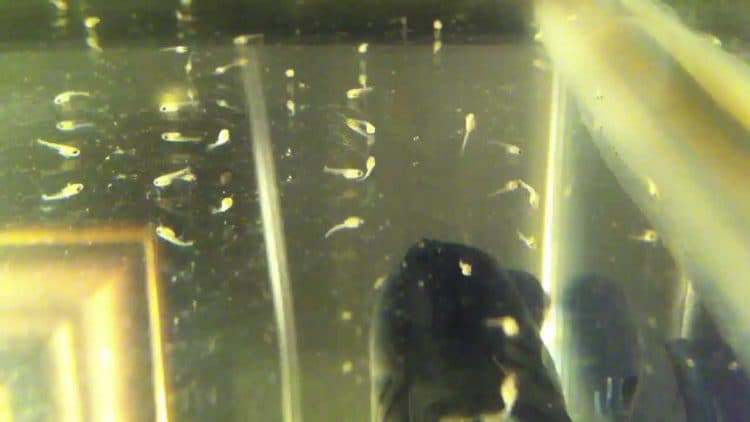Microworms are very small nematodes that are on the jungle floor. Microworms can be used as live food for most fish species and are smaller than newly hatched brine shrimp so they accommodate the smaller fry. They are also incredibly easy to culture and generally stay suspended in the water before falling to the bottom.

The first thing you will need to do is make the culture medium – or their food so they can hatch and live: cook up some regular kitchen oatmeal or cream of wheat and then allow to cool. That’s it.
Now take 2 tablespoons of the cooled, cooked cereal and pack it into the bottom of a plastic container. An old butter bowl (with lid) or an unwanted piece of tupperware work best. Make sure there is no standing liquid – just cereal and pack it tightly in the bottom. Now, sprinkle a pinch of yeast on top of the packed cereal floor.
You will have to purchase or find a starter culture of microworms. You should be able to get a lead on where you can get these from your local fish store. They might even have some on hand. Add your starter culture to the medium. Put a small hole in the lid of the bowl and place the lid on the container tightly.
Within a few days you will see the medium full of moving nematodes. Soon after, there will be many many worms crawling over the sides of the container. The worms on the side of the container are those you feed the fry. As with any food, do not give too many to your fry. If they go uneaten, within 24 hours the microworm will die and begin to decompose, polluting your fry’s tank.
Soon after your culture begins to flourish, start a new culture because the old culture will soon die off leaving an icky gooey mess.
Easy to raise and easy to keep alive and not a lot of space!
Leave a Reply